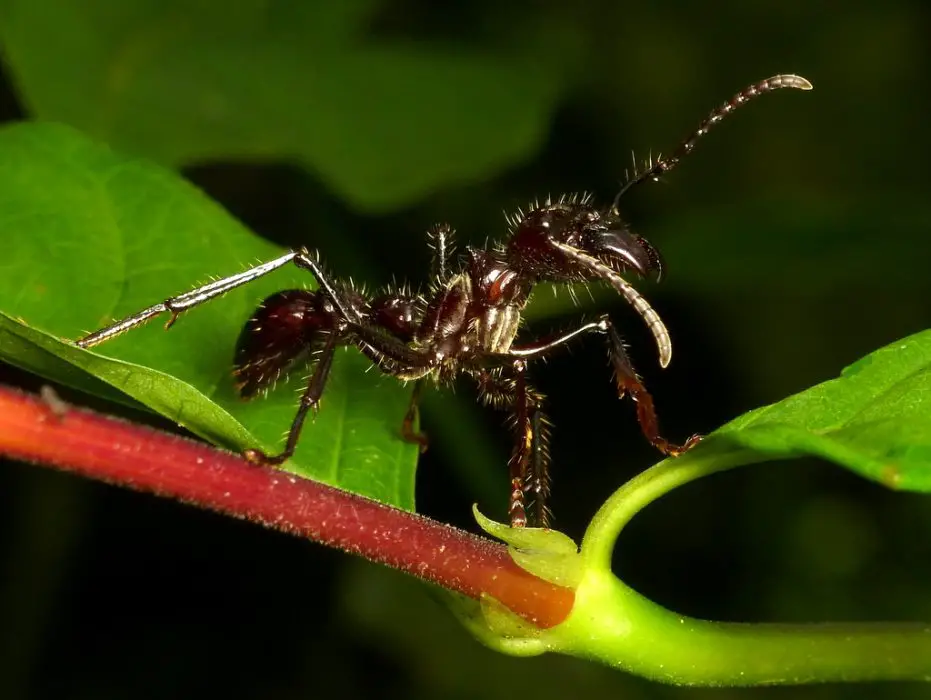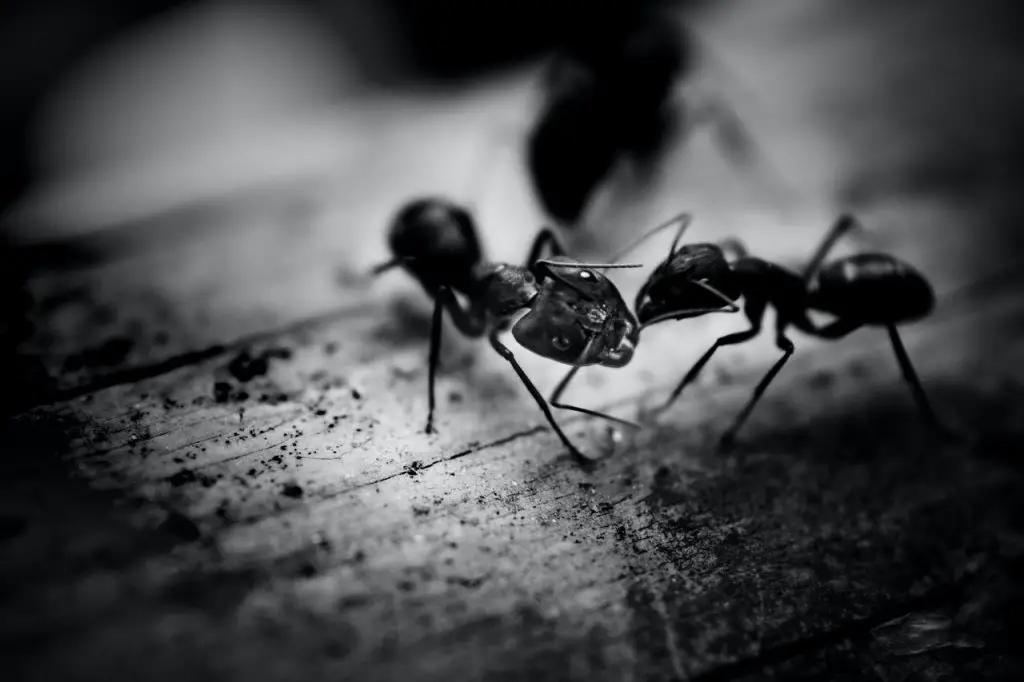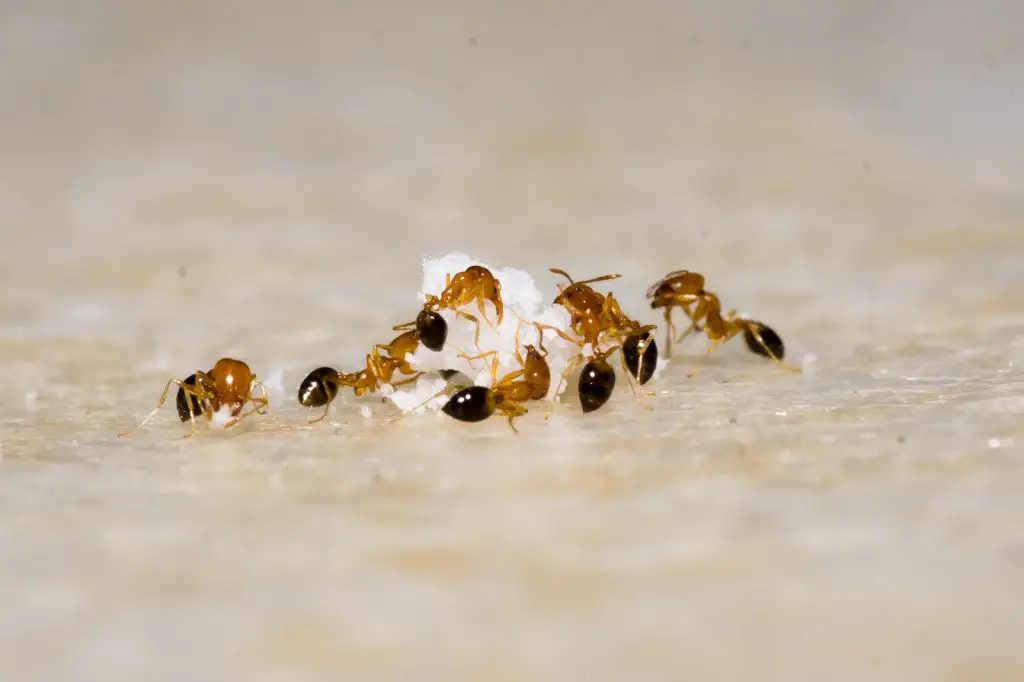Discover effective pain management and treatment strategies to conquer the world’s most agonizing insect the bullet ant sting.
Inflicting one of the most excruciating insect stings, its 1-3 mm long abdominal stinger carries a potent neurotoxin.
The scientific name for bullet ant is Paraponera clavata
A single bullet ant sting can cause up to 8 hours of agonizing pain characterized by an intense and persistent burning sensation.
Bullet Ants are located in the Rainforest spanning from Nicaragua to Paraguay.
One of the more frightening things about Bullet Ants is that they nest in trees, shrubs and in the ground.
Fortunately for those living in the Pacific Northwest United States, Bullet Ants are not a problem but carpenter and other types of ant are.
Bullet Ant Sting: How Dangerous Can It Be?
The bullet ant’s sting inflicts an excruciating pain often compared to being shot.
Ranking highest on the Schmidt sting pain index with a rating of 4.0+, bullet ant stings induce intense and enduring pain, described as burning and throbbing.
Local names reflect the prolonged agony caused by the sting, such as “hormiga veinticuatro” in Venezuela, meaning the 24-hour ant.
The neurotoxin in bullet ant stingers can lead to swelling, elevated heartbeat, bloody stool, paralysis, and even death in severe cases.
However, the bullet ant doesn’t prefer to sting if it could just be left alone
Bullet ants employ various warning defences to signal potential predators against attempting to consume them.
They emit a squeak called stridulating, resembling a rattlesnake’s warning rattle.
Bullet ants emit a scent resembling burnt garlic as an olfactory warning to deter predators.
Additionally, bullet ants visually warn predators by their shiny black appearance, indicating that attacking them would result in an unfavorable outcome.
Can death occur if stung by a bullet ant?
Although the bullet ant inflicts a scalding, throbbing, and persistent sting for up to 24 hours. But it is not inherently dangerous.
According to Schmidt, social insects possess the advantage of collective defence, attacking in large numbers to protect their colony.
However, continually provoking a bullet ant colony despite the painful warning could result in 245 stings being fatal to a healthy individual weighing 154 pounds (70 kilograms).
There are no recorded cases of death caused by bullet ant stings.
The Satere-Mawe of the Amazon region in Brazil and other participants in indigenous manhood rituals have experienced multiple stings from bullet ants without reporting any deaths.
Nonetheless, the venom of the bullet ant is highly lethal. It is capable of killing small mammals such as attacking rodents or insectivores with just a few stings.

Bullet ant sting symptoms
If you are stung by a bullet ant (Paraponera clavata), you may experience a range of symptoms.
The bullet ant earns its reputation for possessing one of the most painful insect stings in the world. Have a look at the typical symptoms associated with a bullet ant sting.:
- Intense pain: People often describe the sting of a bullet ant as excruciatingly painful, often likening it to being shot or hit with a bullet. The pain is immediate and can last for several hours.
- Swelling and redness: The area around the sting site may become swollen, inflamed, and red. This localised reaction is a common response to venom.
- Itching and irritation: You may experience itching and general discomfort around the sting site. It is important to avoid scratching to prevent further complications, such as infection.
- Numbness or tingling: Some individuals may feel numbness or tingling sensations near the sting site or in the surrounding area. This can be a result of the venom’s effect on the nervous system.
- Systemic reactions: In rare cases, a bullet ant sting can lead to systemic symptoms that affect the entire body. These can include headache, dizziness, nausea, vomiting, muscle pain, sweating, and fever.
It’s worth noting that the severity of symptoms can vary from person to person, and some individuals may have a stronger reaction than others.
If you are stung by a bullet ant and experience severe symptoms or have an allergic reaction, it is crucial to seek immediate medical attention.
Bullet ant sting treatment
Here are some bullet points outlining treatment options for a bullet ant sting:
- Remove the stinger: If the bullet ant left its stinger behind, carefully remove it to prevent further venom release.
- Clean the area: Wash the affected area with mild soap and water to reduce the risk of infection.
- Cold compress: Apply a cold compress or an ice pack wrapped in a cloth to the sting site to help alleviate pain and reduce swelling.
- Pain medication: Over-the-counter pain relievers such as ibuprofen or acetaminophen can help manage the intense pain caused by the sting. Follow the recommended dosage instructions.
- Topical creams or ointments: Over-the-counter hydrocortisone cream or calamine lotion may help relieve itching and inflammation.
- Antihistamines: If you experience allergic reactions or significant itching, taking oral antihistamines can provide relief. Follow the instructions on the packaging or consult a healthcare professional.
- Avoid scratching: Even though it may be tempting, refrain from scratching the sting site to prevent infection and further irritation.
- Watch for allergic reactions: Look out for symptoms like difficulty breathing, facial/throat swelling, rapid heartbeat, or dizziness. Seek immediate medical attention if experienced.
Remember, while these measures can provide symptomatic relief, it is essential to consult a healthcare professional, especially if you experience severe symptoms or have an allergic reaction to the bullet ant sting.
Bullet sting in comparison to other Ants and insect sting
Bullet ants inflict a distinct kind of sting that sets them apart from other ants, wasps, or bees.
Their stings result in prolonged and intense pain that can last for 12 to 36 hours.
In comparison, the sting of a tarantula hawk wasp is painful for just a few minutes, and a honeybee sting causes intense pain for only five to 10 minutes.
The venom of bullet ants primarily consists of poneratoxin, which is a small peptide composed of 25 amino acids.
The main function of this neurotoxin in the bodies of vertebrate animals, including humans, is to activate the receptors responsible for inducing intense pain.
Do bullet ants have wings?
Adult bullet ants (Paraponera clavata) do not have wings. They belong to a group of ants known as wingless ants or ants without functional wings.
Bullet ants are large and robust, measuring about 1 to 1.5 inches (2.5 to 3.8 cm) in length. They have a powerful sting and are known for their painful sting rather than their ability to fly.?

Are bullet ants considered endangered?
The shrinking forests and the rise of urban structures have led to a decline in forested areas.
This poses a significant threat to the habitat of bullet ants, putting them at risk of extinction.
Due to the lack of specific data on their conservation status, it is highly likely that bullet ants, like many other tropical invertebrates, are endangered.
The increased deforestation and their preference for large arboreal trees further contribute to their vulnerability.
conclusion
The bullet ant is notorious for its excruciating sting and the intense pain it causes, lasting for hours or even up to a day.
Despite their potent neurotoxin and formidable defences, bullet ants are not inherently dangerous unless provoked persistently.
The management and prevention of bullet ant stings involve wearing protective gear, avoiding ant colonies, and taking prompt action to remove the ants and treat the sting.
Recognize the ecological importance of bullet ants and their vulnerability to habitat loss and deforestation, despite their uniquely severe stings.
Protecting their natural habitat is vital to preserving the delicate balance of our ecosystems and ensuring the survival of these fascinating creatures.
By understanding the biology and behavior of bullet ants, we can appreciate their role in nature and work towards their conservation to safeguard their future.



